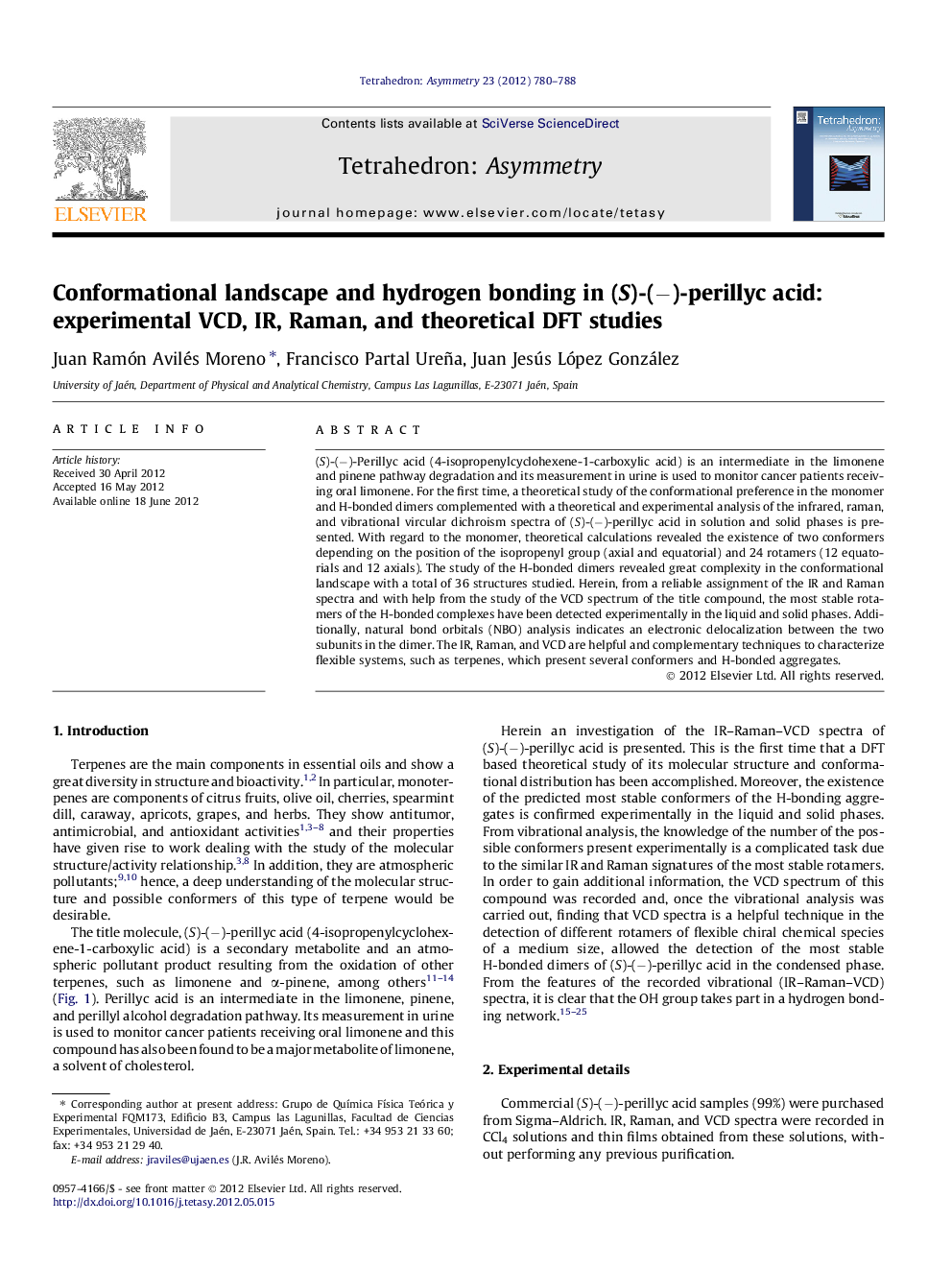| Article ID | Journal | Published Year | Pages | File Type |
|---|---|---|---|---|
| 1344204 | Tetrahedron: Asymmetry | 2012 | 9 Pages |
(S)-(−)-Perillyc acid (4-isopropenylcyclohexene-1-carboxylic acid) is an intermediate in the limonene and pinene pathway degradation and its measurement in urine is used to monitor cancer patients receiving oral limonene. For the first time, a theoretical study of the conformational preference in the monomer and H-bonded dimers complemented with a theoretical and experimental analysis of the infrared, raman, and vibrational vircular dichroism spectra of (S)-(−)-perillyc acid in solution and solid phases is presented. With regard to the monomer, theoretical calculations revealed the existence of two conformers depending on the position of the isopropenyl group (axial and equatorial) and 24 rotamers (12 equatorials and 12 axials). The study of the H-bonded dimers revealed great complexity in the conformational landscape with a total of 36 structures studied. Herein, from a reliable assignment of the IR and Raman spectra and with help from the study of the VCD spectrum of the title compound, the most stable rotamers of the H-bonded complexes have been detected experimentally in the liquid and solid phases. Additionally, natural bond orbitals (NBO) analysis indicates an electronic delocalization between the two subunits in the dimer. The IR, Raman, and VCD are helpful and complementary techniques to characterize flexible systems, such as terpenes, which present several conformers and H-bonded aggregates.
Graphical abstractH-bonded dimer of the (S)-(−)-perillyc acid, NBO interactions, and details of the IR–VCD spectra.Figure optionsDownload full-size imageDownload as PowerPoint slide
